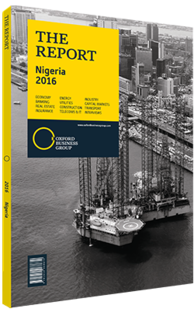Opportunities for expanding reach of credit bureaus in Nigeria
A domestic margin lending crisis in 2008 and 2009 led to a significant shake-up of Nigeria’s banking sector. In the wake of the period, banking executives were charged with mismanagement, lenders were nationalised and the industry as a whole was in need of support. This was evident in a myriad of ways, but one of the most visible was the proliferation of non-performing loans (NPLs), which had risen to 28% of total loans outstanding by December 2009. The high rate of bad debt led to the establishment of the Asset Management Corporation of Nigeria (AMCON), which soaked up NPLs from commercial lenders in an effort to help clean up balance sheets, and also prompted the central bank to improve credit monitoring.
Under the 2008 Guidelines for the Licensing, Operations and Regulations of Credit Bureaus in Nigeria, the CBN licensed three credit monitoring agencies between 2009 and 2010: Nigerian-based CR Services; CRC Credit Bureau, formed as a partnership between Nigerian-based firms and the US-based Dun and Bradstreet; and Xpert Decision Systems (XDS) Credit Bureau of South Africa. Coverage by these three bureaus has grown steadily, from just under 80,000 customers in December 2010 to over 29m customers at the end of 2015. Today, banks and other financial institutions are required by the CBN to check databases of at least two of the three monitoring agencies before arriving at a credit decision. While each bureau builds and maintains its own independent database and information sharing agreements, the information held may vary between each of them.
Greater Transparency
Beyond the overarching goal of judging creditworthiness, the emergence of credit monitoring was spurred by a desire to decrease fraud in the system. “Previously, there had always been a question of identity. With the emergence of credit bureaus, there is greater confidence and transparency in the credit system,” Olanrewaju Agbede, head of marketing at XDS Credit, told OBG. “The bank verification number (BVN) has also made it easier to link a person with their credit history.” The BVN, the unique numeric identifier that was instituted in 2015, has made it easier for credit agencies to link a customer’s credit history across multiple accounts and institutions. By considering factors beyond simple biographical data, credit databases and the BVN reduce the potential for fraud in the system.
Looking To The Future
In an effort to further widen coverage and improve holistic oversight, there has been a push to include new sources of information in credit reports. Banks under the CBN’s supervision are required to use credit monitoring; however, other financial institutions, such as development finance companies and microfinance lenders, are under no such obligation. Convincing these firms to use credit monitoring services could help to greatly expand the market.
The CBN seemed to have a broad data set in mind when it produced its 2008 operational guide for bureaus, in which it permitted the collection of data from “other entities that have data and information that serves the purposes of the company”. Credit bureaus have since taken advantage of the open-ended nature of the statute’s wording, and maintained a wide latitude in defining what constitutes an acceptable source.
Given the mass of data collected, the credit bureaus are now looking for ways to use this information for things other than credit decisions. Business extensions under consideration by the operators include the sale of data to third-parties, such as credit card issuers; the feeding of information into risk-pricing models; and the development of succinct credit scores, a feature that is common to many countries but is not yet available in Nigeria.
You have reached the limit of premium articles you can view for free.
Choose from the options below to purchase print or digital editions of our Reports. You can also purchase a website subscription giving you unlimited access to all of our Reports online for 12 months.
If you have already purchased this Report or have a website subscription, please login to continue.

